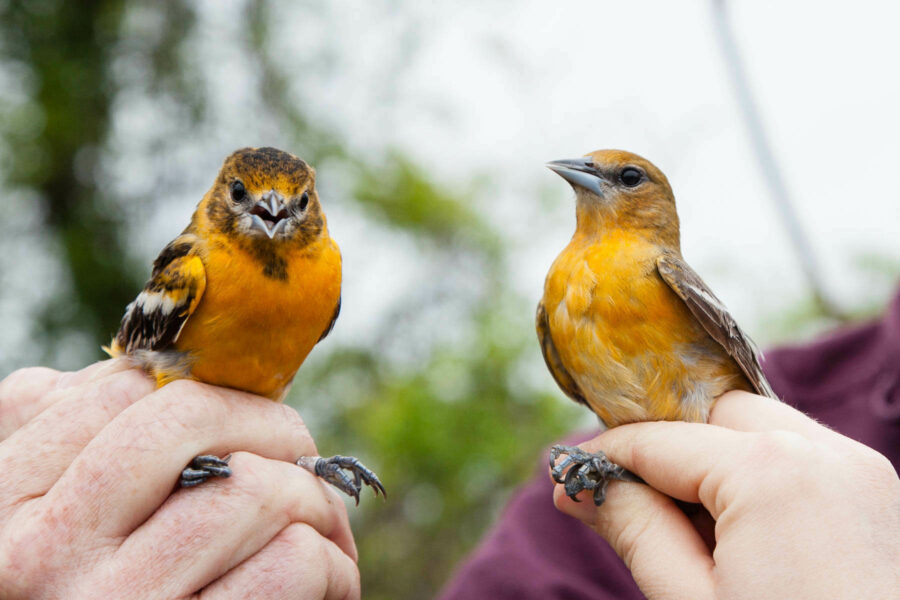Female birds show their colors

Anyone who’s compared a peacock to his female counterpart knows that a bird’s sex can make a big difference in its appearance. Usually, male birds are more colorful, as this vibrancy helps them to attract a mate. Since females are often in short supply, the males must compete to earn their attention.
It’s not just about looking flashy. Color can even be an indication of health. For example, the rosy red color on male house finches comes from pigments in its food—the higher the quality of the food, the more pigment.
However, it isn’t only the males that show a splash of color. Some female birds also have vibrant plumage to show off.
The Baltimore oriole is known for its distinctive orange and black—that’s the male coloring. Females are a paler olive-brown to yellow. However, the females become a deeper orange each time they molt. Older female orioles can be almost as bright as the males. Baltimore orioles can live up to 11 years in the wild.
Blue jays can be found in backyards and forests throughout the Chesapeake watershed. Their bright blue coloring and striking markings make them one of the most recognizable birds in the eastern United States. Males and female blue jays are virtually identical in color and size and can best be distinguished by closely observing their behavior, as their mating and nesting behaviors differ.
The belted kingfisher, a stocky bird found year-round in the Chesapeake region, is one of a few bird species in which the female is more brightly colored than the male. Both males and females share the same powder blue color and white underside, but the females also have a broad, rusty band on their bellies that sets them apart.
Want to see these colorful birds in the wild? Learn how to start birding with this guide, and find out more about birds of the Chesapeake in our Field Guide.

Comments
Based on your description of the females I think I have a young female coming to my nectar feeder. I have oranges out too. They have been poking at them for sure. But I have not spotted them at the oranges. I also have only seen a male in flite around the house twice and never at the feeder. Are they very shy birds? I'm going to continue with the oranges in hope of spotting them eating it.. what time of day do they visit the oranges?
Thank you!
Your comment has been received. Before it can be published, the comment will be reviewed by our team to ensure it adheres with our rules of engagement.
Back to recent stories